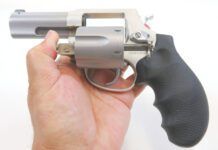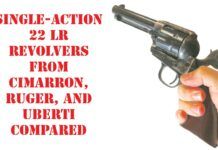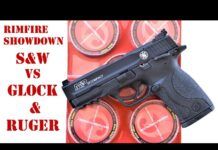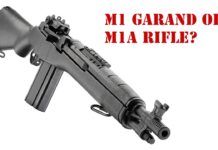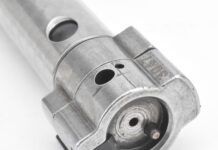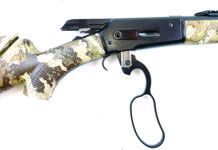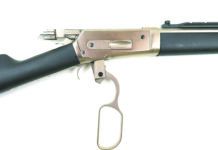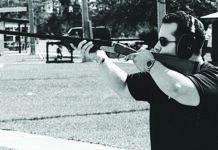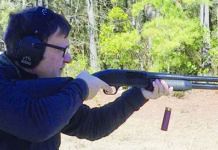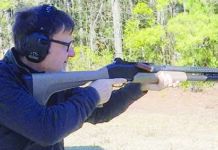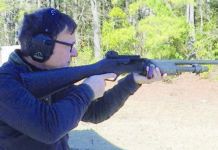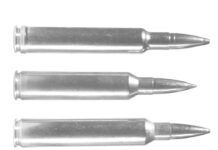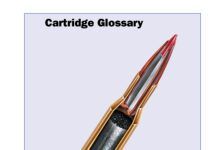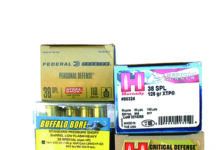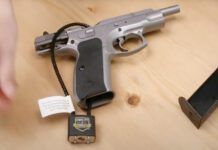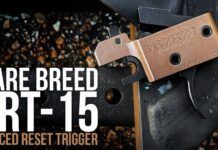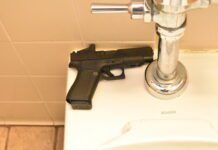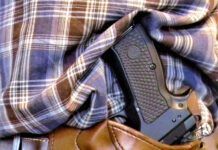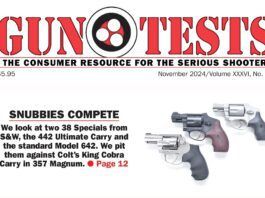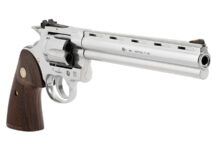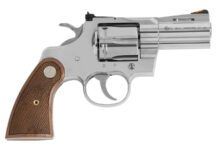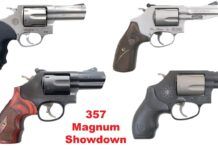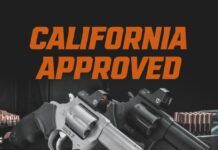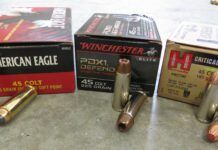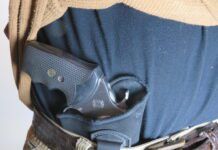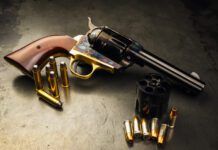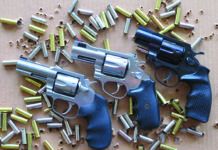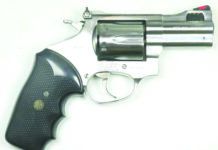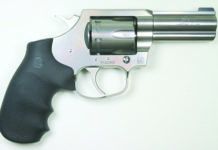Colt Introduces New 8-Inch Python to 357 Magnum Revolver Line
Colt’s Manufacturing Company LLC has added an 8-inch Python to its snaky line of revolvers. The new 8-inch Python is available in matte stainless...
Colt Introduces New Barrel Lengths to Its Iconic Python Line
Colt’s Manufacturing Company LLC has expanded its Python line with the introduction of 2.5” and 5” stainless-steel models.
The expanded Python lineup now includes six...
357 Magnum Showdown
The 357 Magnum is ballistically superior to the 9mm, but that magnum power comes at a cost, and that is recoil, as the Gun...
Taurus Optics-Ready Revolvers are now California Approved
The Taurus 856 T.O.R.O. and 605 T.O.R.O. (Taurus Optics Ready Option) revolvers were added to the California Department of Justice’s roster of Handguns Certified...
New Shooter’s Guide: What Are Popular Revolver Cartridges?
Many new shooters aren’t as familiar with revolvers as shooters of, ahem, more experience. But revolvers remain as simple, easy-to-maintain firearms for hunting, carry,...
Davidson’s Smith & Wesson Model 20 Commemorates 200th Anniversary of the Texas Rangers
Davidson’s, a firearms, ammunition, optics, and accessories wholesaler, announced a very limited edition heavy-duty exclusive revolver produced in collaboration with Smith & Wesson. MSRP:...
Are Revolvers Good For Self Defense?
Though most concealed-carry shooters prefer pistols these days, a cadre of knowledgeable, experienced self-defense aficionados prefer revolvers, sometimes referred to as wheelguns for the...
Davidson’s Offers Upgraded Pietta Single-Action Exclusives
Davidson’s, the firearms, ammunition, optics, and accessories wholesaler, has teamed up with Pietta, Italy, to create eight new exclusive pistol offerings. The pistols are...
First Look Video: New and Old Colt Pythons
The Colt Python is back, and more than a few Gun Tests readers have requested a face-off between the new Pythons and the original...
Compact 357s from Rossi, Rock Island Armory, and Colt
A reader recently asked if we could run a test of compact 357 Magnum revolvers to see if there was any significant difference in...
Rossi Model 971 VRC 357 Magnum
GUN TESTS GRADE: B$295The Model 971 VRC (Vent Rib Compensated) is a used revolver that is fairly common to find on GunBroker.com and GunsAmerica.com...
Colt King Cobra KCOBRA-SB3BB 357 Magnum
GUN TESTS GRADE: A$838The new King Cobra is different from the original King Cobra models made from 1986 through 1992. Unlike the original King...


